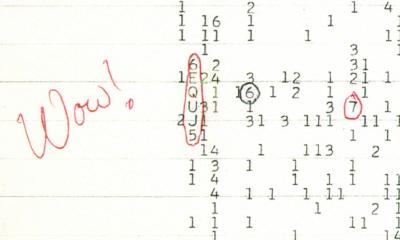Due to the type of activity, one often has to deal with the fact that the “Internet generation”, having lived to the age of 18, cannot imagine all the diversity of the nature of our planet. For them, trees grow in the taiga, and grass in the tundra, they do not imagine the African savannah and do not know why hard-leaved forests are called hard-leaved.
Let's start our excursion into the diversity of the world from the northernmost natural zone - the zone of the Arctic deserts.
1. The Arctic deserts are shown in gray on the map.
The Arctic desert is the northernmost of the natural zones, characterized by an arctic climate, arctic air masses predominate all year round. The islands of the Arctic Ocean lie in the zone of the Arctic deserts (Greenland, the northern part of the Canadian archipelago, the Svalbard archipelago, Severny Island of Novaya Zemlya, the New Siberian Islands, and a narrow strip along the coast of the Arctic Ocean within the Yamal, Gydansky, Taimyr peninsulas, and further east to Chukotka Peninsula). These spaces are covered with glaciers, snow, rubble and rock fragments.
2. Arctic desert in winter 
3. Arctic desert in summer 
The climate is extremely harsh. Ice and snow cover lasts almost the whole year. In winter, there is a long polar night here (at 75 ° N, its duration is 98 days, at 80 ° N - 127 days, and in the region of the pole - half a year). Average January temperatures are about -30 (for comparison, in Tomsk the average January temperature is -17), frosts are often below -40. North-east winds blow almost constantly at a speed of more than 10 m / s, snowstorms are frequent. In February-March, the sun rises from the horizon, and in June, along with the onset of the polar day, spring comes. The snow cover on the well-warmed southern slopes disappears by mid-June. Despite round-the-clock lighting, temperatures rarely rise above +5, soils thaw by several centimeters. The average temperature in July, the warmest month of the year, is 0 - +3. In summer, the sky is rarely clear, usually it is covered with clouds, it rains (often with snow), thick fogs form due to the evaporation of water from the surface of the ocean. Precipitation falls mainly in the form of snow. The maximum precipitation occurs in the summer months. There is not much precipitation - about 250 mm / year (for comparison, in Tomsk about 550 mm / year). Almost all moisture remains on the surface, not seeping into the frozen ground and evaporating weakly due to low temperatures and the low position of the sun in the sky.
4. Typical vegetation of the Arctic deserts - mosses and lichens. 
The Arctic desert is practically devoid of vegetation: there are no shrubs, lichens and mosses do not form a continuous cover. Soils are shallow, arctic desert, with insular distribution, localized under vegetation, which consists mainly of sedges, some grasses, lichens and mosses. Plants rarely reach a height of 10 cm, usually nestle against stones (cold air heats up from the surface of the earth, so plants tend to cling as tightly as possible to relatively warm ground), and grow mainly in depressions, on southern slopes, on the leeward side of large stones and rocks. The disturbed vegetation cover is restored extremely slowly.
5. Sedge 
6. Moss cuckoo flax (right) 
6.1. Moss moss lichen (light), lingonberry leaves (lower left). Cowberry leaves are covered with a wax coating that protects them from excessive solar radiation - the polar day can last for many days, weeks and even months. 
The fauna is predominantly marine: walrus, seal, in summer there are bird colonies - in summer goose, eider, sandpiper, guillemot, guillemot arrive and nest. Terrestrial fauna is poor: arctic fox, polar bear, lemming.
7. Lemming - a mouse with a very short tail and ears hidden in fur. The shape of her body is spherical, the most favorable for keeping warm - this is the only way to avoid frostbite in the Arctic climate. 
8. 
9. Lemmings live under snow most of the year. 
10. 
11. And this is a polar fox - a lemming hunter 
12. Arctic fox on the hunt 
13. Do you still want to wear a coat with a fox fur collar? 
14. The white (polar) bear prefers to live on the coasts. Its main food lives in the waters of the Arctic Ocean.

15. Seal with her cub 
16. Walrus 
17. Beluga dolphin - an inhabitant of the waters of the Arctic Ocean 
The color of the beluga whale is monophonic, it changes with age: newborns are dark blue, after a year they become gray and bluish-gray; individuals older than 3-5 years are pure white (hence the name of the dolphin).
The largest males reach 6 m in length and 2 tons in weight; females are smaller. The head of the beluga whale is small, "lobed", without a beak. The vertebrae on the neck are not fused together, so the beluga whale, unlike most whales, is able to turn its head. The pectoral fins are small and oval in shape. The dorsal fin is absent; hence the Latin name of the genus Delphinapterus - "wingless dolphin". By the way, the fact of the formation of a stable expression "to roar like a beluga" in Russian is interesting. It is associated with the loud sounds that the white whale makes. In the 19th century, the names "belukha" and "beluga" were equally used. Currently, "beluga" refers primarily to the name of the beluga fish, and wingless dolphins are called beluga whales.
18. 
19.
20. Gaga. The down of this particular bird is considered the best heat-insulating material for winter clothes - it "breathes". In such clothes it is not hot during thaws and not cold during frosts. For many decades, polar explorers' clothing was sewn using eider down. Down is harvested from empty eider nests, each nest contains about 17 grams of down. 
21. 
22. Kulik 
23. Chistik 
24. Bird market. Guillemots. 
25. Guillemot in flight 
26. Bird market. 
To be continued.








